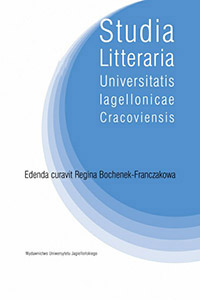Michèle Roberts’s Mud and the Practice of Feminist “Re-Vision”
Michèle Roberts’s Mud and the Practice of Feminist “Re-Vision”
Author(s): Marta GoszczyńskaSubject(s): Gender Studies, Studies of Literature, Novel, Philosophy of Language, Hermeneutics, Theory of Literature
Published by: Wydawnictwo Uniwersytetu Jagiellońskiego
Keywords: rewriting; retelling; feminist rewriting; Michèle Roberts; Mud: Stories of Sex and Love;
Summary/Abstract: In Michèle Roberts’s Mud (2010); writing emerges as an act of creative recycling, allowing preexisting texts to be moulded into new forms and infused with new meanings. In the opening, title story, the idea is expressed through the image of mud, whose curly brown flakes falling off shoe-soles are seen as “bits of writing” − fragments of letters, commas and full stops − to be pieced together into “something new”. This process of literary replenishment is repeatedly witnessed by the readers of Mud as they come across characters, scenes and motifs borrowed from such well-known literary texts as Beowulf, Tristan and Isolde, Jane Eyre, Madame Bovary and Nana or encounter a host of actual historical figures, including George Sand, Alfred de Musset, Claude Monet, Saint Thérèse of Lisieux and Colette, in stories that set out to retell incidents from their biographies. Offering new versions of these literary and historical texts, Roberts engages in an act of feminist revision as outlined in Adrienne Rich’s seminal 1979 essay, When We Dead Awaken: Writing as Re-Vision. Rich describes the practice of feminist rewriting as “an act of survival”, whose essence is “not to pass on a tradition but to break its hold over us”. Indeed, in story after story in the collection, this is precisely what Roberts seems determined to do.
Journal: Studia Litteraria Universitatis Iagellonicae Cracoviensis
- Issue Year: 13/2018
- Issue No: 2
- Page Range: 89-96
- Page Count: 8
- Language: English

